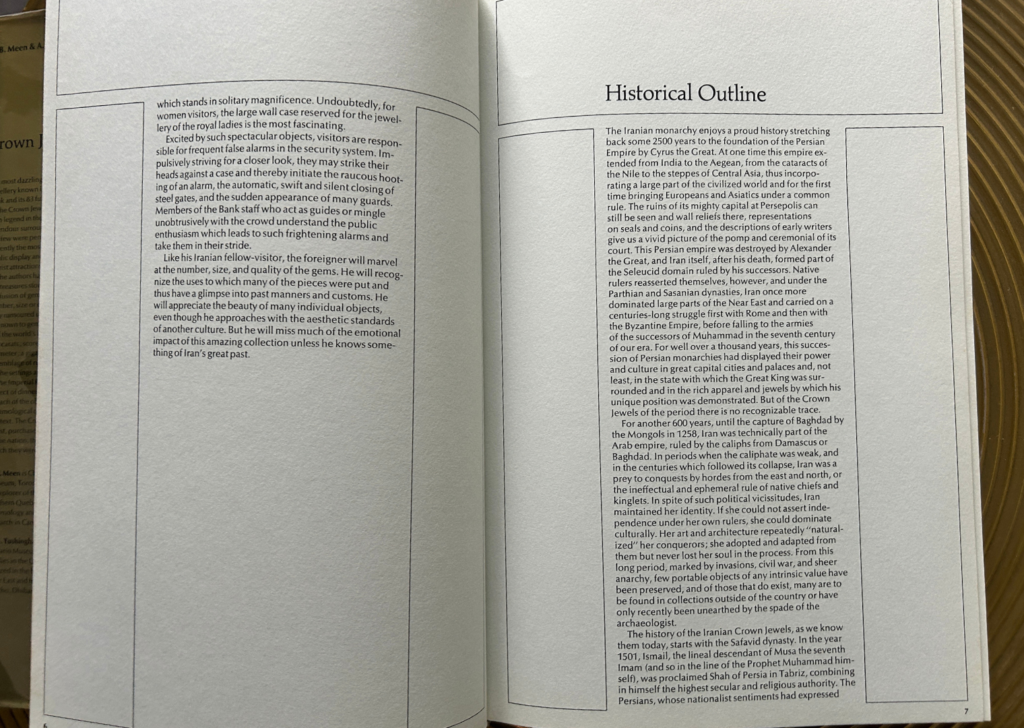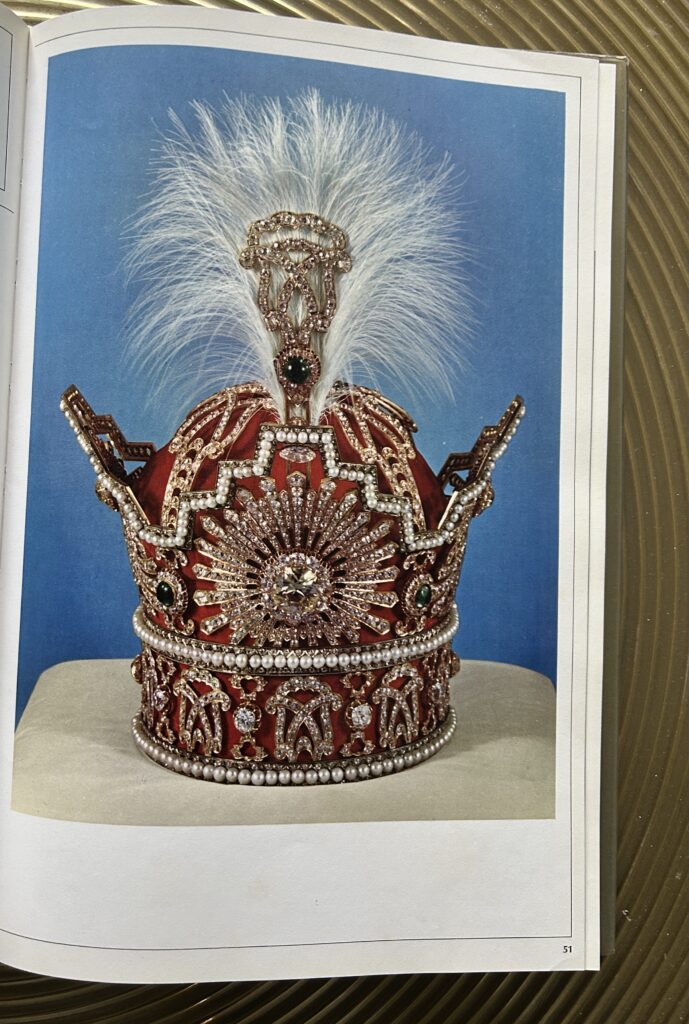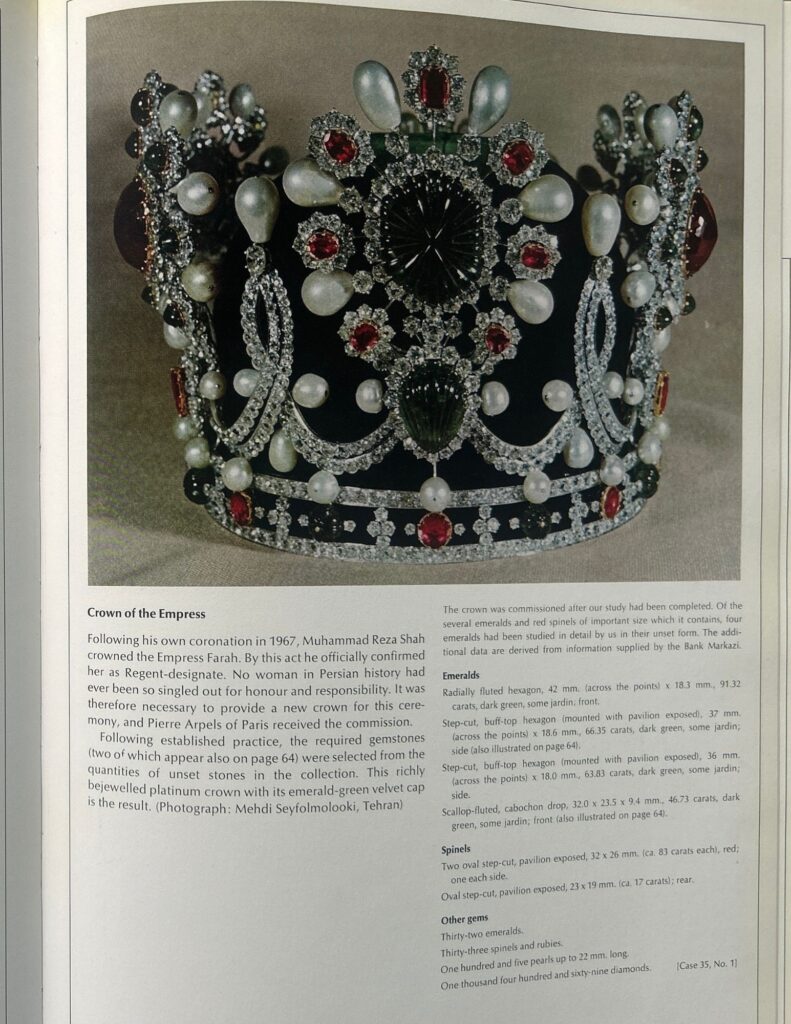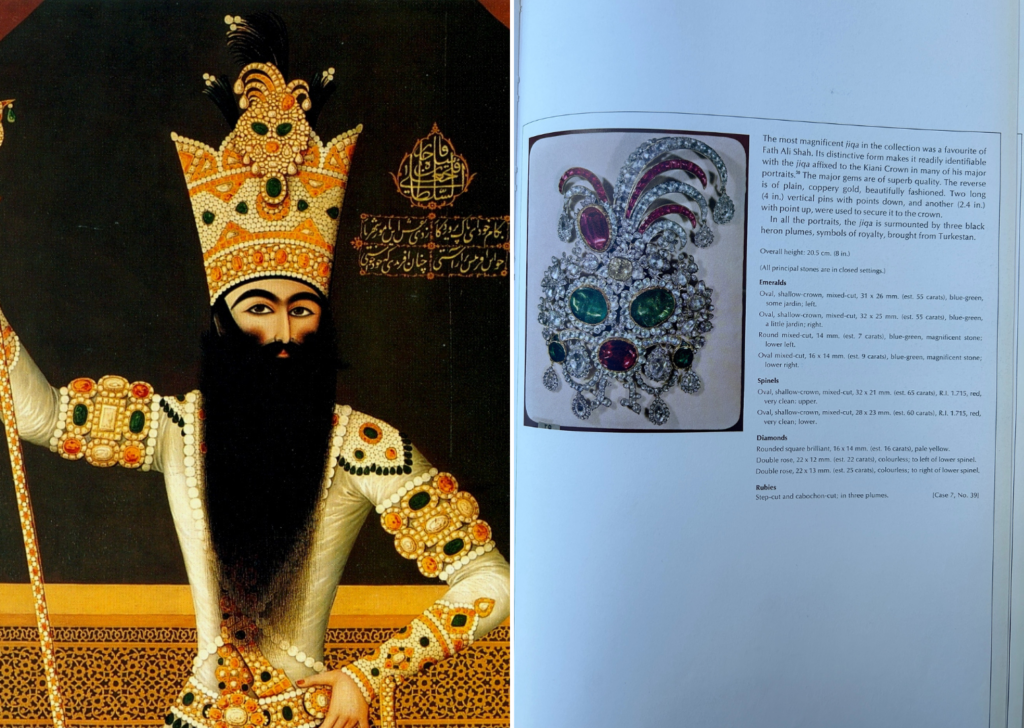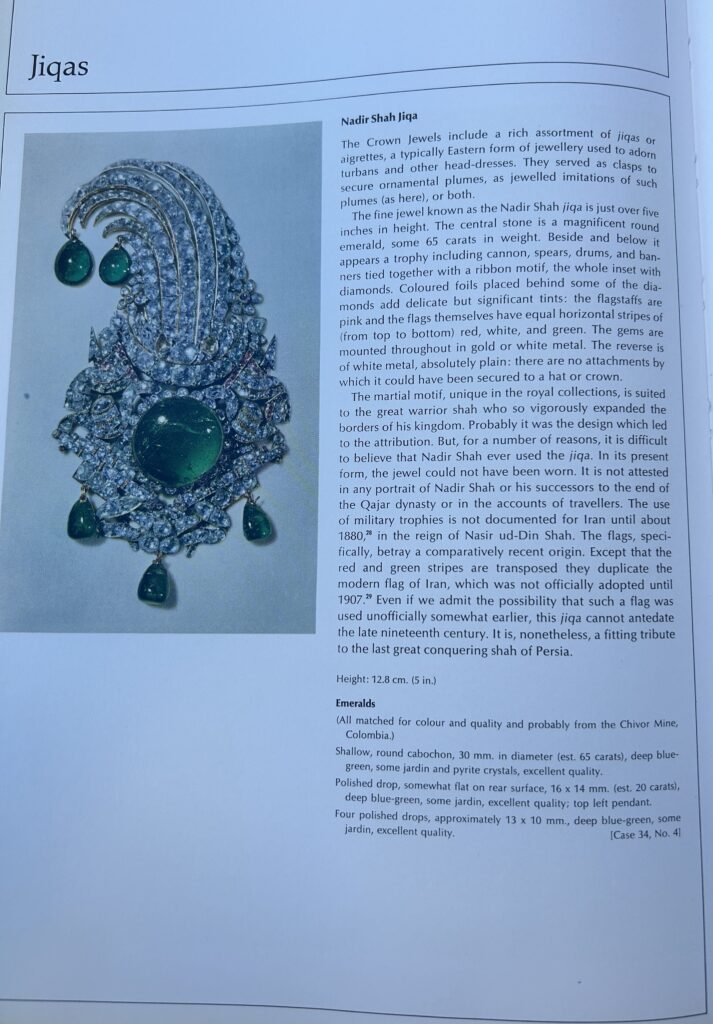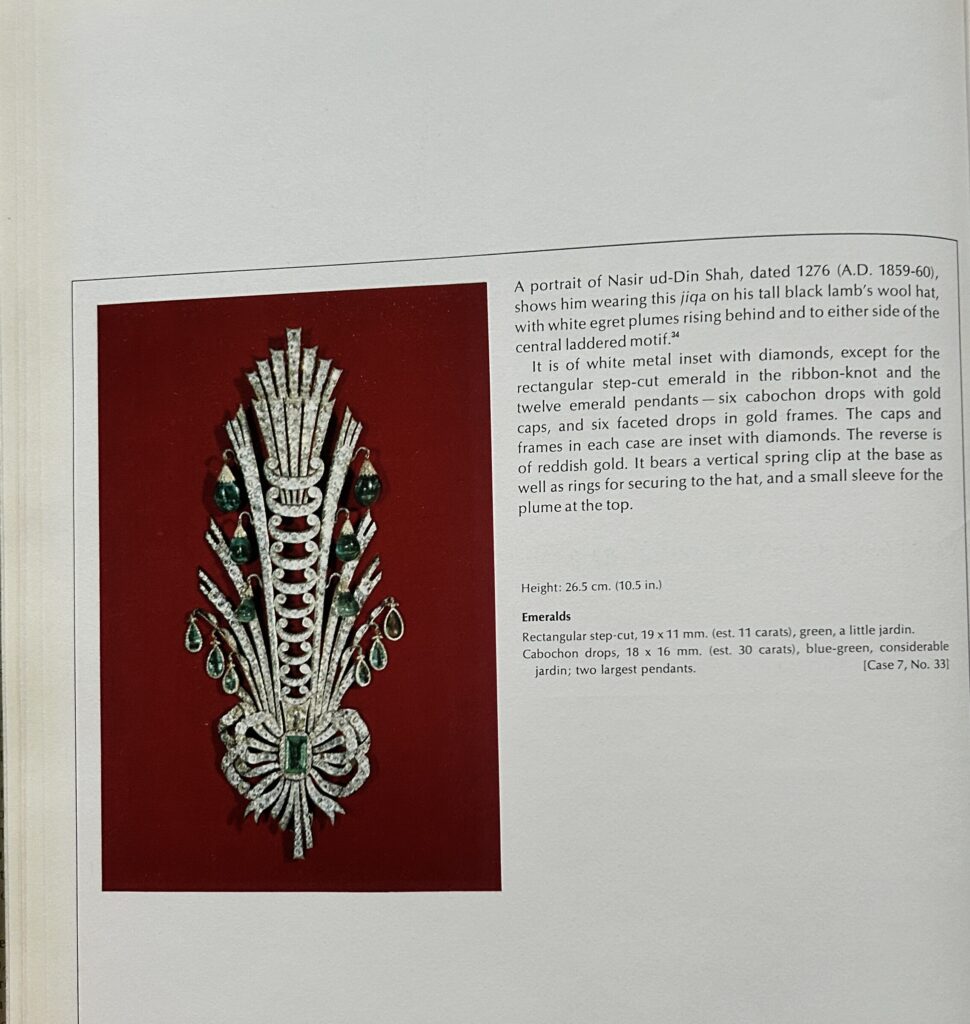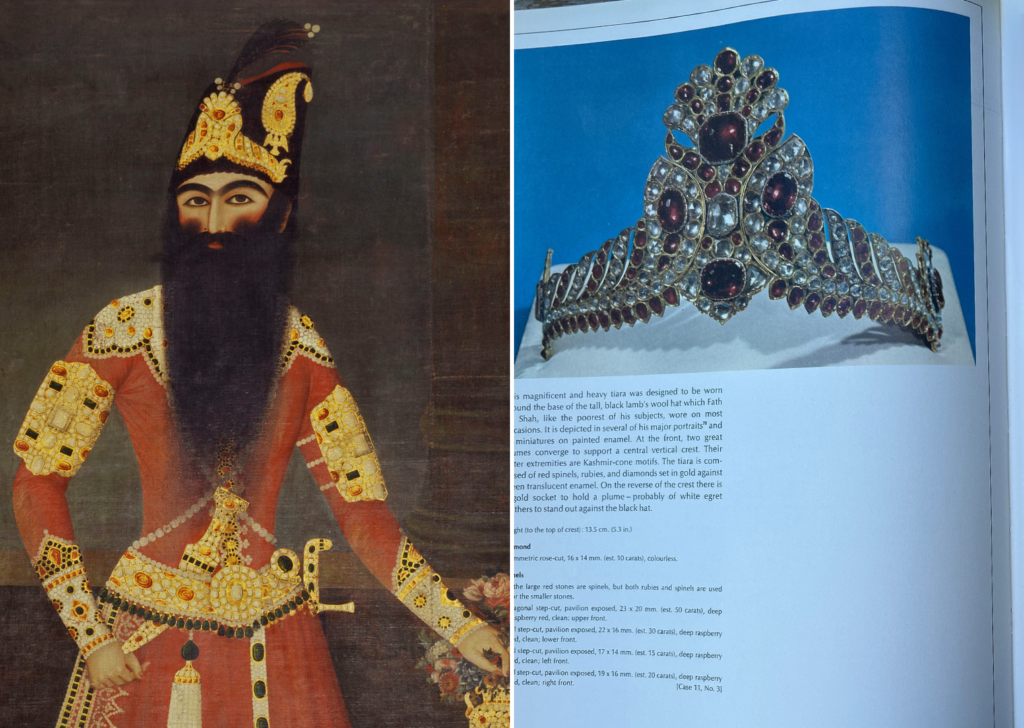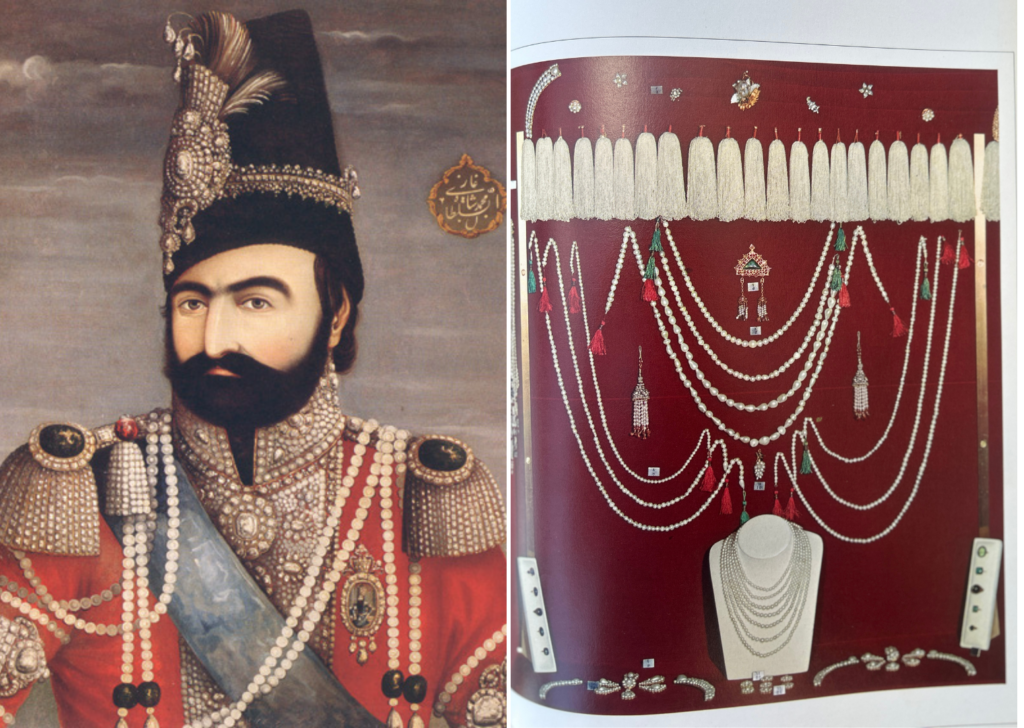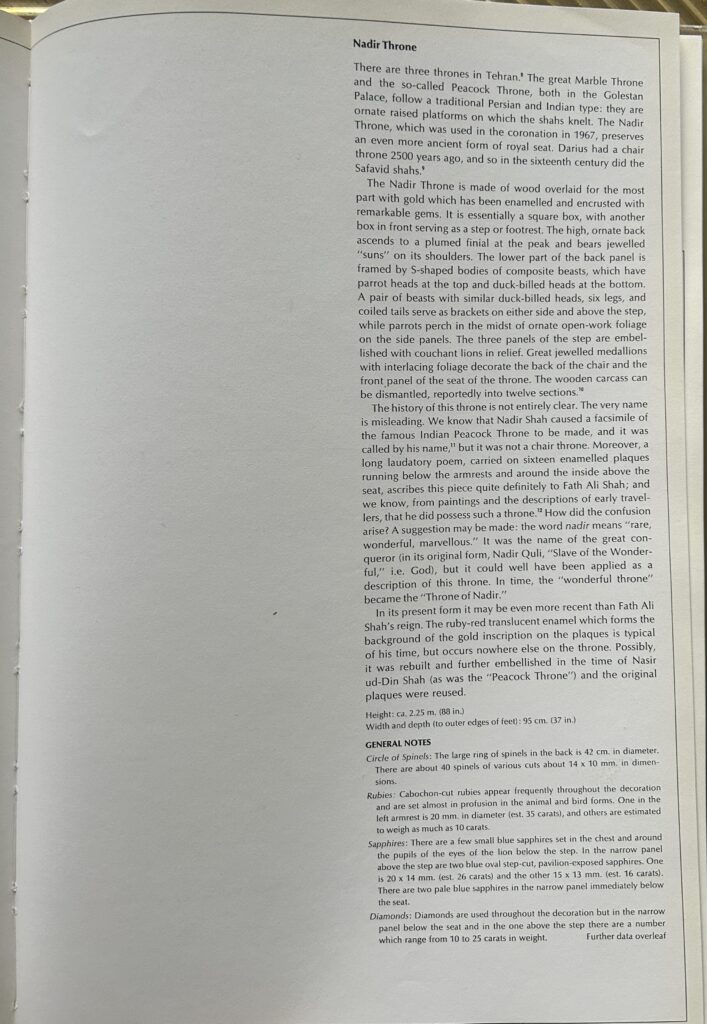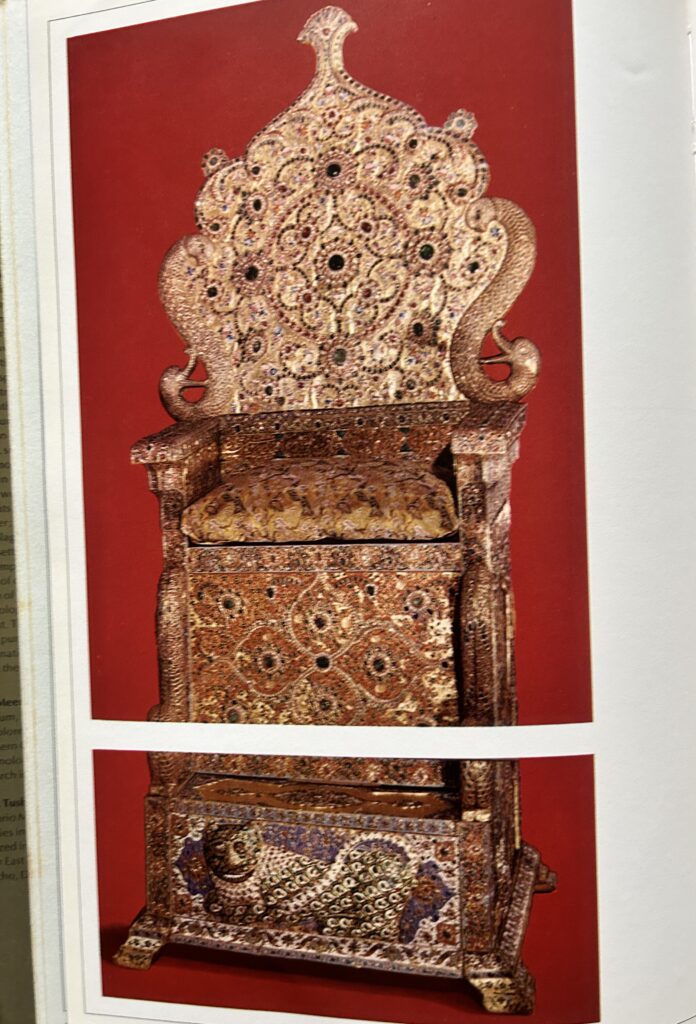The Iranian Crown Jewels, housed in the Central Bank of Iran in Tehran, stand as a remarkable representation of the country’s cultural heritage and history. Spanning several centuries, the collection holds some of the most breathtaking and valuable precious stones and objects ever seen, from the famous Darya-i-Noor diamond to the splendid Peacock Throne. Unlike many other collections, the Iranian Crown Jewels include a wide array of men’s jewels. These include exquisite sword hilts, ornate aigrettes, pins and resplendent turban ornaments.
This blog will explore men’s adornment in the collection, through a selection of the objects documented in the 1968 book, ‘Crown Jewels of Iran,’ by Meen & Tushingham., This special edition commemorates the coronation of Shah Mohammad Reza Pahlavi the previous year. Excerpts from the book are accompanied by additional notes and photographs that provide context for some of the objects worn by members of the Qajar and Pahlavi dynasties, as well as those that came before them.
Crowns:
The Pahlavi Crown was the coronation crown of Iran’s Pahlavi dynasty (1925-1979). Commissioned by Reza Shah in 1925, Iranian jewellers, led by Haj Serajeddin Javaheri, crafted it to replace the Qajar dynasty’s Kiani Crown. The crown’s design draws inspiration from Sassanid Empire designs and was first used at Reza Shah’s coronation in 1926. It last adorned his son, Mohammad Reza Pahlavi, in 1967. Now part of Iran’s National Jewels, the crown is made of gold, silver, and red velvet, weighing approximately 2,080 grams. Adorned with 3,380 diamonds, amounting to 1,144 carats, a central 60-carat yellow diamond, three rows of natural white pearls, and five emeralds; the largest of these, roughly 100 carats and sits at the crown’s apex.
The 1967 coronation was remarkable not only for its opulence but also because a woman was crowned Empress (Shahbanu) for the first time in Iran’s modern history. Naturally, the Empress needed a crown, and one had to be made using some of the unset stones from the Crown Treasure. Luckily, the author had the advantage of studying some of the loose stones that were selected for the crown when it was commissioned to Van Cleef & Arpels. As a result, we can observe the fully assembled crown on page 57 and view some of the stones used in it on page 64.
Turban ornaments
The book features an assortment of turban ornaments (jiqa). Fath Ali Shah, who reigned from 1797 to 1834, favoured one of the most splendid examples and was often portrayed wearing it. On the left is an oil painting of the Shah dated between 1809 and 1810 from the Hermitage Museum. In this portrait, he is seen wearing the aigrette atop the Kiani Crown. The museum’s description highlights that, following the formal European portrait tradition, this depiction of the Shah is rich in symbolism, notably featuring the three plumes made from black heron feathers, symbolising royal dignity. The Shah is presents himself in his utmost glory, adorned with his aigrette made of the highest quality emeralds, spinels, diamonds and rubies.
One of the other examples of a Jiqa is this emerald and diamond example, now believed to date back to the 13th century.
The Jiqa was not exclusive to Iran. In fact, it is one of the stylistic objects it had in common with India (where it was known as sarpech) and Turkey. Exceptional pieces occasionally pop up at auction houses every now and then, often breaking records, and recounting the tales of royal and noble families from times gone by.
In 2019, The Nizams of Hyderabad sarpech was sold at auction. Also made of spinel and diamond, the description of the sarpech at the auction house reveals the special significance it held in India, “Considered the ultimate symbol of royalty and sometimes used as a reward for exceptional service to the emperor, it evolved from the tradition of pinning a heron’s feather to the front of a turban.”
A different example of a turban ornament that bears a closer resemblance to a tiara, and can be seen in another oil painting of Fath Ali Shah housed at the Victoria and Albert Museum. This diadem is crafted from diamonds and spinels.
The royal belt 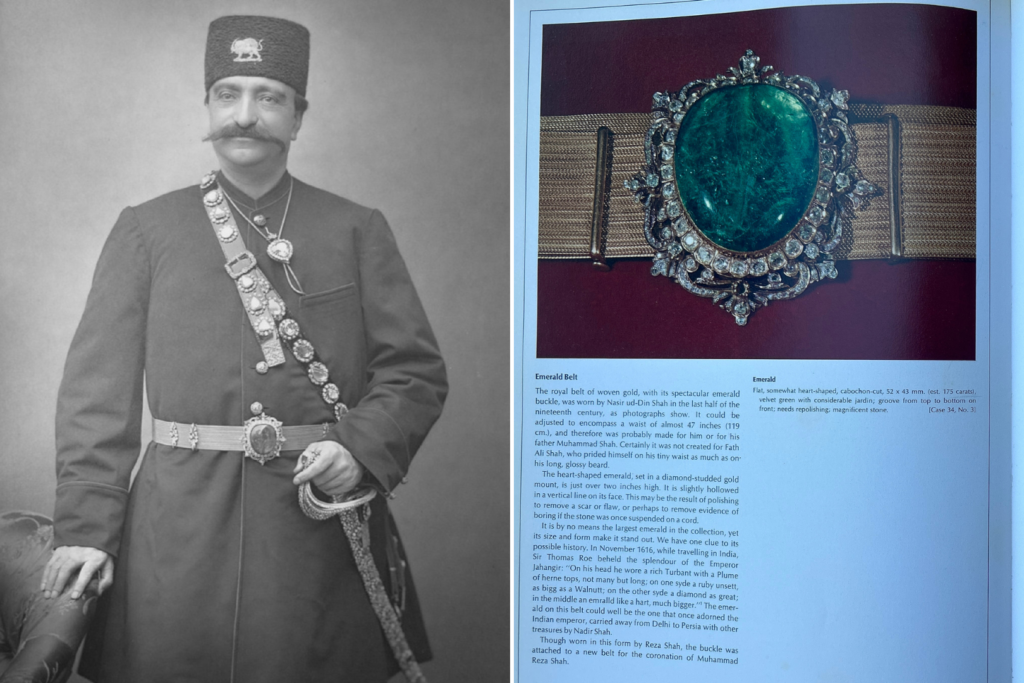
This gold-woven belt, measuring 119 cm in length, appears in 19th-century photographs of Nasser Al Din Shah Qajar, suggesting that it was likely crafted for him or his father, Mohammad Shah, rather than Fath Ali Shah, who was known for his narrow waist. The belt’s buckle features an oval-shaped emerald, estimated to stand at 5 cm tall and weighing 175 carats and framed by diamonds.
The history of the emerald remains unclear, but it includes a reference dating back to 1616 from the court of Jahangir, the Mughal Emperor of India. It is possible that the emerald came to Iran following Nader Shah’s conquest of Delhi. While the entire belt was worn during Reza Shah Pahlavi’s coronation, a different band was used with the buckle for the coronation of his son, Mohammad Reza Shah Pahlavi, the last Shah of Iran.
Pearls for kings
Long before celebrities like Pharrell Williams and Shawn Mendes adopted pearls into modern-day menswear, Kings in the East adorned themselves with pearls as symbols of status, power and wealth. The Iranian Crown Jewels contain an impressive selection of pearls, found in necklaces as well as strings meant to be fastened to clothing. While some were worn by women, most graced the attire of Shahs and princes, as evidenced in numerous paintings and photographs.
Bonus: The Nadir Throne
Currently housed in the Treasury of National Jewels in Tehran, this opulent seat is one of three historical thrones in the Iranian capital, having been used during the 1967 coronation ceremony. Its design harks back to the ancient style of royal seat used by figures like Darius, the founder of the Persian empire, over 2500 years ago. Though its name may suggest a connection to Nadir Shah, enamelled plaques and historical paintings rather attribute it to Fath Ali Shah. Standing at an approximate height of 2.25 meters and measuring 95 cm in both width and depth, the throne is a meticulously crafted piece. Made primarily of wood, it is overlaid with gold and adorned with an array of precious gems, featuring a 42-cm diameter circle of spinels, cabochon-cut rubies, and several blue sapphires. The design is further enriched by strategically placed diamonds, ranging from 10 to 25 carats. Remarkably, the throne can be disassembled into twelve sections to facilitate its transport.
The throne’s aesthetic features encompass a high, ornate back that rises to form a plumed finial, bearing jewelled “suns” on its shoulders. The lower section of the back panel and the sides of the throne are adorned with S-shaped composite beasts and parrots. Couchant lions in relief embellish the panels of the step or footrest. The term “nadir,” meaning “rare, wonderful, marvellous,” may originally have been used descriptively, leading to its subsequent association with Nadir Shah. Further modifications to the throne, such as the addition of ruby-red translucent enamel, may have occurred during the reign of Nasir ud-Din Shah. This throne remains a striking representation of the craftsmanship and artistry of its time.
The book covers other bejewelled objects from the Crown Jewels Collection, including ceremonial weapons such as shields and swords, women’s jewellery, and exquisite glassware and hand mirrors.

